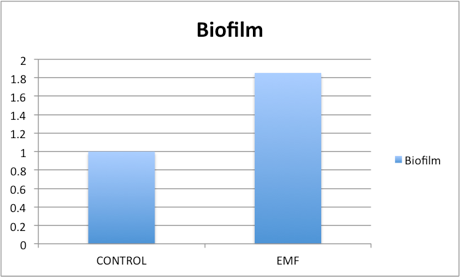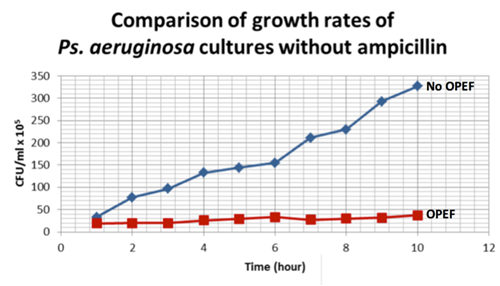Widespread use of antibiotics has led to an increase in resistant bacteria such as MRSA and others.
The DireWaves project will investigate if resistant bacteria can be disarmed by means of a non-antibiotics, physical approach using resonant waves.
The global increase in resistant bacteria today poses a threat to people with weakened immune systems and tomorrow may pose a threat to all of humanity. Consequently, there is a need to identify alternative approaches to disarming harmful microbes.
DireWaves will investigate if resonant electromagnetic fields (EMF) can interfere with and disrupt antibiotic resistant microbes.
Specifically, DireWaves will establish which frequency ranges and amplitudes that might be effective in disarming resistant microbes and synergistic with existing antibiotics.
Unpublished preliminary studies have shown that low frequency, low-intensity EMF may interfere with biofilm formation in some types of resistant microbes (fig.1). Other studies have shown that OPEF (oscillating pulsed electric field) technology that uses a carrier wave of around 100 kHz also affects living cells including effects on the growth of MRSA, Borrelia and Pseudomonas-biofilm (fig.2).

Fig.1. Relative effect of low frequency, low-intensity EMF on biofilm/biomass ratio of P. aeruginosa (unpublished experiment by N.S.Blom et al)

Fig.2 Inhibiting effect of OPEF on the growth of P.aeruginosa (from 1)
The DireWaves project will combine the low-frequency effector waves with the OPEF carrier wave technology and follow the effects in state-of-the-art high-throughput biofilm assays.
The project is funded by the Villum Foundation and is scheduled to run from 2017-2019.
1. Browne, M., Foley, S., Babck, N., et al. (2013)
Non-thermal Inhibition of Antibiotic Resistant Bacteria by Oscillating
Pulsed Electric Fields (OPEF) Poster. Proc. Am. Soc. of Microbiol. 2013, Denver, Colorado